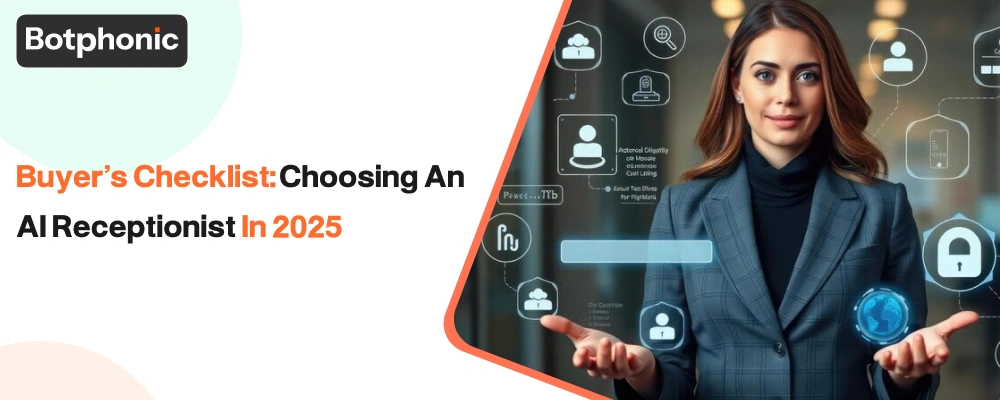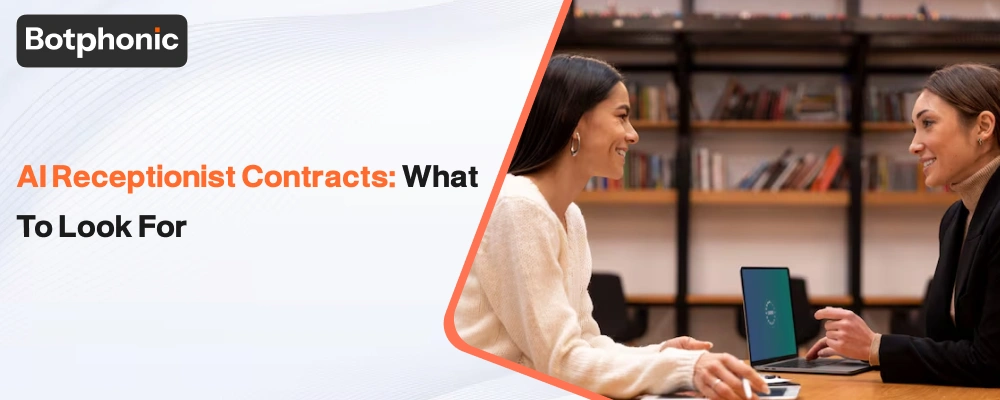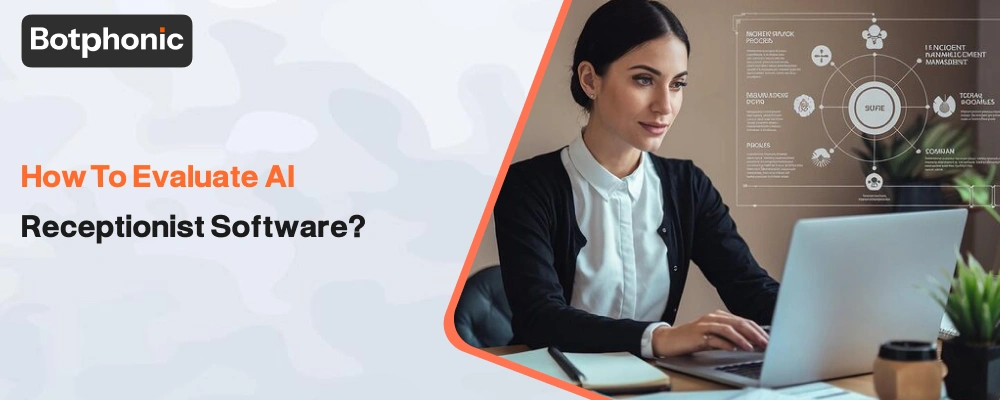
Summarize Content With:
Summary
The blog is mainly about explaining the step-by-step process that deals with the various factors that influence the evaluation of AI receptionist software, how to compare AI call assistant platforms, and giving key insights for a business decision to be made in 2025. The decision process will be more certain with the help of the mentioned guidance, trends, features, and actionable tips.
Key Takeaways
- Discover the features and traits that matter most in AI receptionist tools and that best suit the business needs of your company.
- Get familiar with the best comparison methods, e.g. usability, integration, and customer experience.
- Learn about the best ways for detailed testing of AI call assistant solutions before the final decision is made.
- Go through easy-to-understand recommendations and use reliable data as a smart software selection tool for 2025.
Introduction
Would you be able to picture a front desk which is never tired, never loses its pleasantness, and meets every request with absolute efficiency? Well, that is exactly the promise of modern AI receptionist software. Most of the contacts, which are the first in the business world, take place by phone, and thus the quicker the reply, the better.
So a good AI call assistant is almost necessary. Yet, the tool with the most features is not the only best; rather, it is about matching the AI’s performance with the actual business problems so that the customer sees that he/she is cared for every time.
If we were looking for a proper AI receptionist, this is the book we would be taking wherever we go. Here, you will find the most significant elements of the evaluation of platforms for AI receptionists, the errors to avoid, and how to get support from AI receptionist software for your easy growth, whether you ramp up, struggle with call volume volatility, or just want a more productive front desk.
Understanding What Evaluating AI Receptionist Really Means
When evaluating AI receptionist software, keep your focus on the business outcomes that matter the most, beyond the objective of just replacing a human touch on the phone.
The right evaluation starts by figuring out must-have features such as around-the-clock availability, a voice that sounds natural, trouble-free appointment scheduling, and wise call routing. So, the AI call assistant is not only an advancement in technology but also a real asset for customer service, brand experience, and operational savings.
The Heart of Any AI Receptionist Software
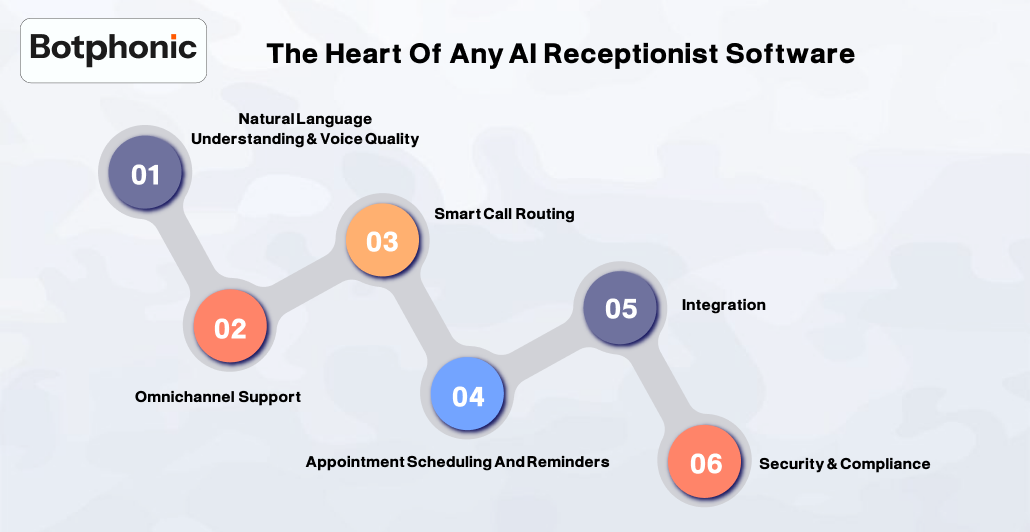
The top AI receptionist software should always be able to give a good account of specific features that alleviate the user journey:
- Natural Language Understanding & Voice Quality: The speech of the AI should sound just like a real human. The system must be able to understand different accents, conversational tones, and varied caller moods. The best are those that can incorporate rapidly changing language/voice processing and track the emotions of the speaker for a more human-like interaction.
- Omnichannel Support: It should no longer be just voice in 2025. The AI of the receptionist should be able to handle SMS, email, and web chat, and thus be able to communicate with a customer using the method they prefer.
- Smart Call Routing: The call is connected to the right department, agent, or self-service option without requiring the user to navigate long menus or loops.
- Appointment Scheduling and Reminders: The automated booking and gentle reminder(s) are lessening the possibility of no-shows.
- Integration: To be able to offer the kind of service that is personalised and context-aware, the system should be able to connect directly to the CRM, calendars, and customer databases.
- Security & Compliance: Data privacy, encrypted communications, and observed regional rules are the must-haves and no longer optional extras.
Usability & Onboarding: Does It Work for Your Team?
- Intuitive Dashboards: A few of the features of call routing rules are analytics and call logs. Additionally it also offers real-time updates.
- Customizable Scripts & Workflows: With effective AI receptionist onboarding it allows your team to change the AI’s responses. Also, allows you to set the escalation triggers, and customize the greetings all by themselves without the intervention of your IT department.
- Fast Implementation: The most significant trend of the industry is that the majority of the companies expect the AI receptionist to be a completely functional operator. They expect them to take less than seven days for basic installations and in less than thirty days for advanced integration.
Performance & Reliability: Measuring What Matters
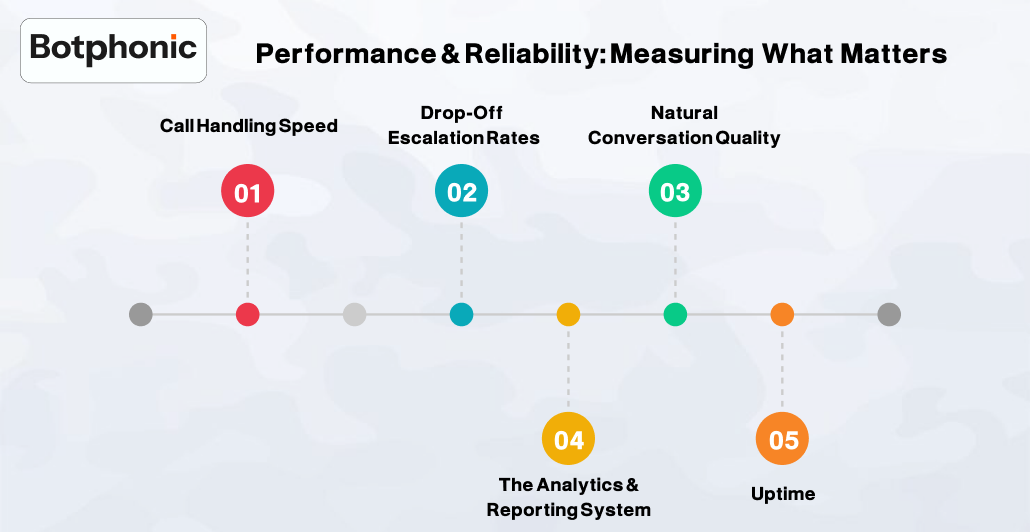
When evaluating the accuracy of an AI receptionist, the luxurious demo videos are not enough to get the whole picture. But the actual performance in the field is what really matters. The essential factors that are beyond the first impressions dictate the performance in the real world. The most trustworthy indicators are some of those types:
1. Call Handling Speed
An intelligent AI assistant needs to be both quick and efficient. Optimally, it should be able to start answering calls within 2–3 rings. This is a minor but extremely important aspect that assists in decreasing the number of calls that are interrupted due to the unavailability of the other party and provides a smooth experience for the caller, right from the start.
2. Drop-off and Escalation Rates
Not every call must be routed directly to a human agent. A system that is designed well should be able to handle the most common questions confidently. By 2025, the highest-performing solutions standards are allowing a human-intervention-free call management rate of approximately 85%. If the handoff rate is too high, that’s a red flag.
3. Natural Conversation Quality
Interacting with AI should be effortless and not feel like dealing with a machine. Callers have to be allowed to request an explanation, change their voice, or even correct the AI. If it provides the wrong answer, and the system should be able to adjust accordingly. It is this capability that changes the user’s perception from being frustrated to being indispensably helpful.
4. Analytics and Reporting
Great performance does not only mean the outcome of the call. The best systems are always supported by incredible analytics and reporting. Besides just transcription, they are also monitoring sentiment, summarizing client interaction, and offering straightforward, user-friendly data for continuous development. This is the reason why the AI keeps improving over time.
5. Uptime and Reliability
Reliability is, therefore, the last but not least point that is very important. The system that is not available when the customers require it has failed its task. The best solutions nowadays guarantee 99.9% or even more uptime on all the channels. Additionally, it expresses that are supported and makes them almost as reliable as a human receptionist, if not more so.
Integration: The Cornerstone of a Seamless Experience
No receptionist, be it a human or an automated one, functions individually. The best AI receptionist software is deeply integrated with which:
- CRM and Sales Tools: All the conversations are kept automatically, and the context is left intact.
- Support Ticketing Systems: For quick call forwarding and follow-up recording.
- Web & Mobile Apps: Conversation-extending AI is everywhere your clients expect support.
Price & Scalability: Growth Planning
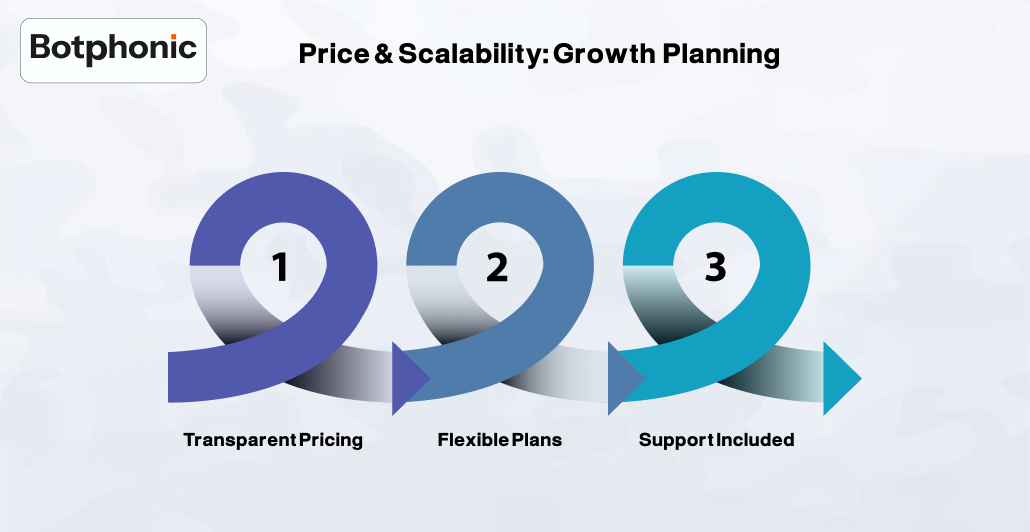
In 2025, AI receptionist software will be available with a pay-as-you-go or per-user subscription model. The pricing is decided by the level of AI, support, and call volume capacity. Pick the plan that suits your average call volume best and still allows for adjustments to meet your demand.
- Transparent Pricing: Only pay for the features or integrations that are part of the AI without hidden AI costs.
- Flexible Plans: Keep the option to change the level of service or add new features when your company gets bigger.
- Support Included: Be on the lookout for plans that come with onboarding, live support, and routine updates.
Testing & Feedback: See It in Action
- Hands-on usage is a must-have before any final decision. Get the members of your staff and customers to give their true opinions. Using pilot programs, sandbox environments, or limited rollouts.
- Customer Satisfaction Metrics: Caller ratings, repeat call rates, and unresolved call logs can be tracked.
- Staff Usability Surveys: Regular team input ensures that pain points are not only identified but also solved quickly.
- Iterate Based on Insights: Weekly monitoring of performance and adjustments to the business settings would be appropriate.
According to Harvard Business Review, companies that organise customer-facing AI pilot programs with structured feedback loops see a 24% faster resolution quality and improvement in customer satisfaction.
Common Mistakes to Avoid While Evaluating AI Receptionist Platforms
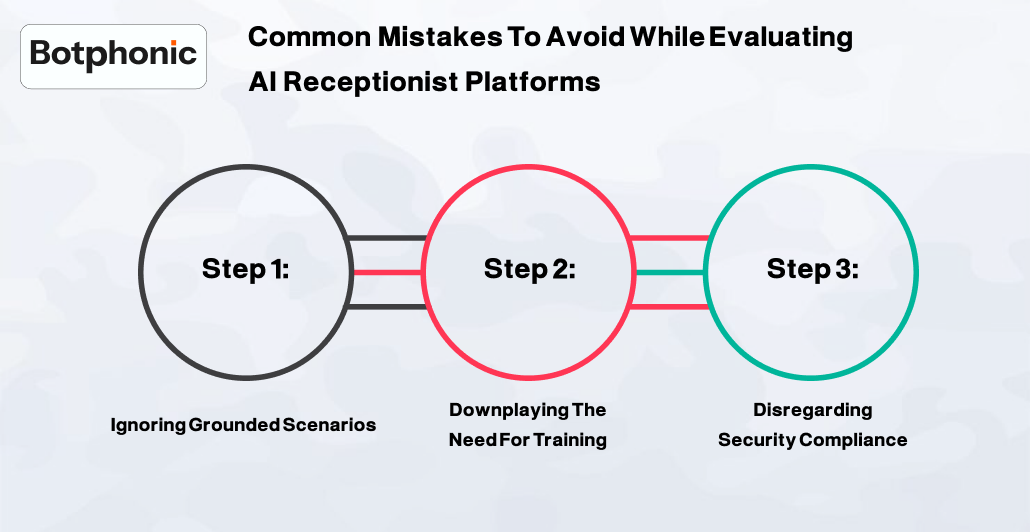
- Ignoring Grounded Scenarios: Real call data and workflows must always be used for testing.
- Downplaying the Need for Training: AI call assistant tools are not “set and forget.” Periodically revise scripts, feedback loops, and escalation triggers.
- Disregarding Security Compliance: Ensure the AI receptionist software meets the relevant industry standards for data privacy, such as GDPR and HIPAA.
Make use of Botphonic AI to take care of your calls 24/7 with the help of smart technology and natural dialogues to make your decision free of risk!
Try Now!Final Thoughts
The key to understanding AI receptionist software in 2025 is not just technology but matching it with business needs, putting customer experience at the forefront, and planning for tomorrow, which is not just about the calls you get today but also growth. Perform a thorough review of the vendor’s features, execute the tests in great depth, and feel free to request personalised customisations.
Want a front desk with higher brainpower? You can see for yourself the difference that the accuracy of AI receptionist software brought by Botphonic AI on every call, every day can make if you start a free trial now.
